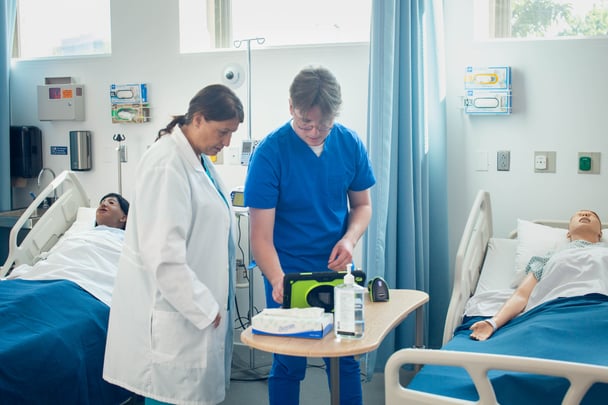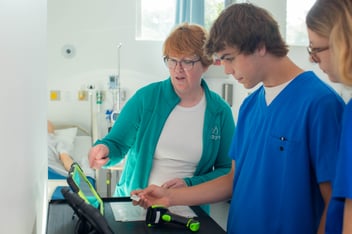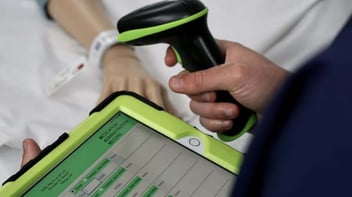
Not all nursing simulations require a dedicated space and fancy, high-tech equipment to be impactful. We challenge you to think outside the box (or the simlab in this case) …get creative, give your students a break from classroom lectures and notetaking, and watch them amaze you and themselves with high-level engagement and application-level learning.
What’s the “secret sauce” you might be thinking? It’s simple – turn your classroom into a simlab. One low-maintenance tabletop nursing simulation a week can make a huge difference in your student’s performance and provide a respite for you and them from formal classroom teaching. And let’s face it…we all get bored with that after a while.
Tabletop simulation involves your students participating in a scenario that you facilitate but that doesn’t involve any medical equipment or physical simulations. You can use paper-based materials, such as case studies, or digital patient charts and medical records.
Tabletop Nursing Simulation Ideas
Here is our list of tabletop simulation ideas. Which ones are you going to add to your program?
- Patient history taking: Students hone their skills by taking a thorough nursing history on
each other or a standardized patient volunteer, identifying patient needs, and developing a
care plan. - Communication and collaboration: Students use role-playing exercises to practice
communication and collaboration skills among healthcare team members, patients, and
families. - Cultural competence: Use focused scenarios to help students understand how to interact
with patients from different cultures and backgrounds, including addressing language
barriers and different cultural beliefs and practices. - Chronic illness management: Students practice managing chronic illnesses such as
diabetes, heart disease, or asthma through simulations that focus on medication
management, patient education, and monitoring symptoms. - Medication administration: Students practice medication administration techniques by portraying the nurse and patient in turn. This helps develop safe and effective medication
administration skills, while also learning how to communicate with patients about medication use and potential side effects. - Adverse drug reactions: Students practice identifying and managing adverse drug
reactions including recognizing common side effects and developing interventions to manage them. - Patient education: Students take on the role of the nurse or patient and practice educating
about medication use, including how to take medications, potential side effects, and drug
interactions. - Interdisciplinary simulations: Students participate in interdisciplinary “rounds” with
students from other healthcare professional programs to learn how to collaborate and
communicate effectively. - Medication safety: Students participate in simulations that focus on medication safety, such as medication reconciliation, error prevention, and medication storage and handling.
Tabletop simulations can be used to teach critical thinking and decision-making skills in a collaborative environment. They let your students practice working together as a team, communicate effectively, and develop problem-solving skills in a low-risk environment. They can also be used to reinforce classroom learning and help your students apply concepts and theories to real-world situations. Sit back and enjoy the show!
Using Sim2Grow’s medication administration training system provides practice in these critical steps of the med. admin. process:
- The three critical medication checks
- The rights of medication administration
- Bedside barcode scanning procedures
- Med. pass documentation
If you're interested in learning more, schedule a free call!



